Näty´s Identity Cabaret

What is identity cabaret?
Identity cabaret is a specific pedagogical process aimed to explore hidden aspects of someone’s identity designed by the Estonian choreographer and pedagogue Jüri Nael. The result of the course ended up with a public performance consisting in a series of solo performances each dealing with a very personal and, let us say, precarious dimension of someone’s identity. How to tackle these aspects of someone’s identity and how to turn them into a glorious performance is actually the process of the course. The students were invited by Jüri into an introspective journey and aimed to transform an inward exploration into an outstanding public display. The course became then two-folded, on one hand it was a possibility for the participants to explore aspects of their own hidden or even repressed persona. And on the other hand, it intended to turn this hidden persona into something powerful, beautiful, attractive, sexy, scary, shinny, monstrous.
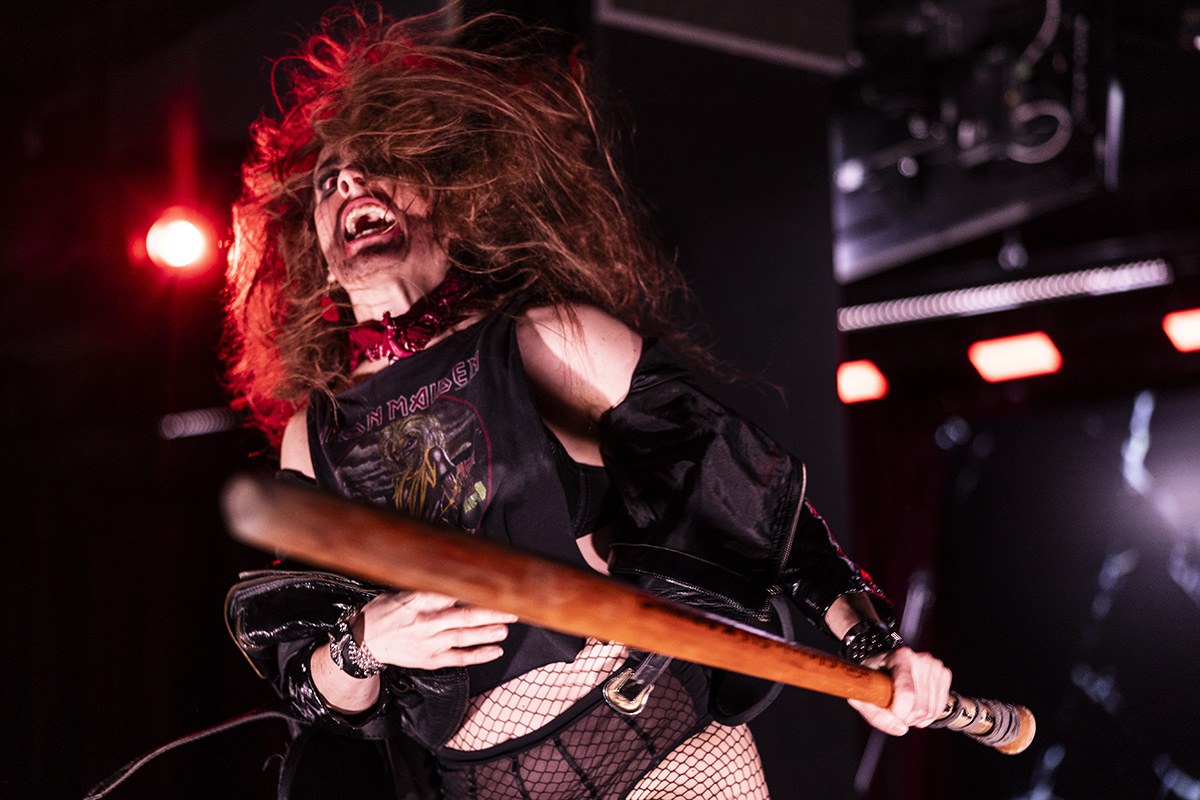
The starting point of the course was a provocative task for the students: they had to search in themselves what is the uncomfortable self, what someone would like to explore but he/she/them don’t dare because it is scary or uncomfortable. This starting point has been difficult, but it is also an excellent challenge which usually empowers tremendously the participants. In this course, the students were able to unleash forces that they might not imagined they had within themselves. And this is what has happened during the presentation last Friday, September 22nd at Paidia. The twelves students of the third year of the theatre work department put up a glorious performance that had shaken the audience. Not only the physical transformation of each participant was astonishing, but the intensity of the presentations was mind blowing.
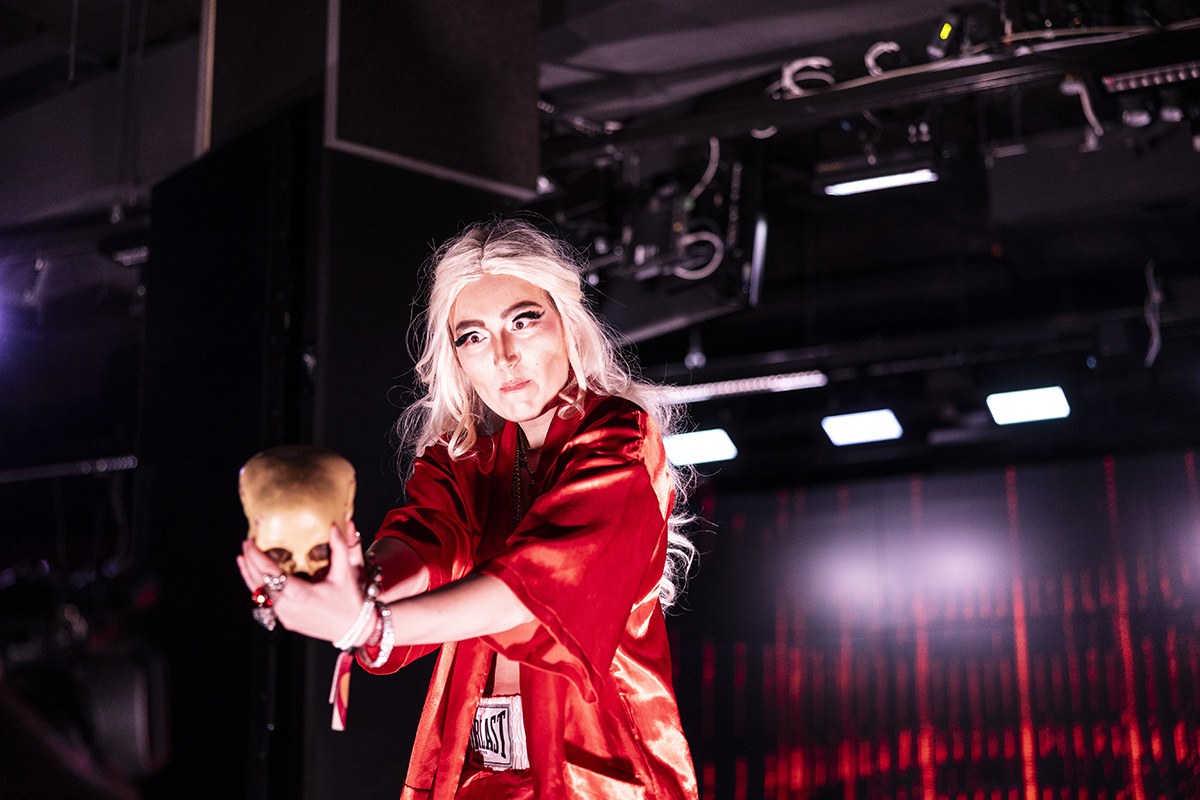
How did that happen?
The starting point of the course, as mentioned above, was the impulse to dig into an aspect of ourselves that is hidden but nevertheless present or even luring us. Something scratching our soul, that we would like to explore but we don’t dare. I will call this uncomfortable self a “new persona”. The emergence of this new persona can take different shapes and populate into many elements that constitute identity: genders, sex, sensuality, desire, cultural background, social class, patriarchy, animality, power structure. After that, the students have to choose a song. The format is the same for all: a 3 minute song that they have to lip-synch on stage.

The solo performance consists then into the presentation of this new persona “singing”(lip-synching) a song. The song that they choose and that they pretend to sing, becomes a form of mask in which they can let the new persona express themselves. But more than “expressing”, what happened during the show is that these new personae transcended the stage, they became gorgeous, brave and astonishing.
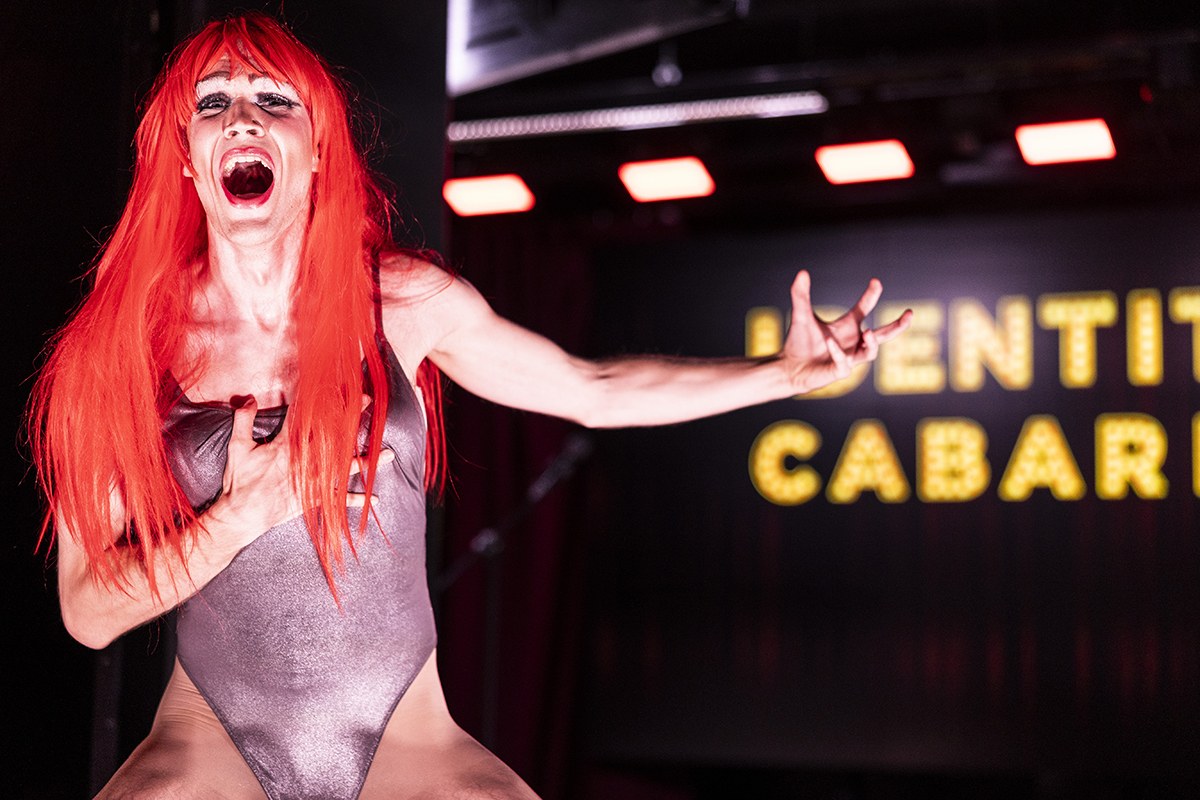
How was the process?
At first the students had an online meeting with Jüri a couple of weeks before the course started. During this meeting, Jüri explained how the course was structured and also advised the student to make their investigation; look for models, ask themselves what is the things that makes them uncomfortable. He suggested also to be inspired by drag shows, burlesque or cabaret performances. He also asked the students to search for a song that would encapsulate at best the persona they wish to explore. The next step was the first day of work with Jüri, where the students presented their song and ideas. Jüri commented and made some suggestion to further their ideas. Then the following step consisted in searching the costumes and creating physically this new persona. After that, Jüri summoned the students to develop a choreography with the song: what do you want to say or do with this song? What do you want to show of yourself while lip-synching? What kind of world would you like to expose on the stage while “singing” the song? It is not just about singing, but it is using the song to present a world. The song is a possibility to express something about this new persona.

The last step was the actual show where these “new persona” could meet the audience. It is important to point out that this work differs from an acting class where the students have to embody a fictional character. Here the personae are not fictional, they are part of the identity of the participants. And this is why the public performance, the encounter with the audience, becomes a critical moment: each students had something important at stake: it was not just to show a character, but it was to defend a very personal gist of freedom.
The process had been very different for each participant. For some it was a bumpy road where every day they needed to search for new costume, new songs, new choreographies. For others, the initial idea was clear, but it took time to fully embody the song, or to find pride and pleasure in this new persona. For others it was a constant linear development where every day they were able to add new details enriching the performance. And so on.
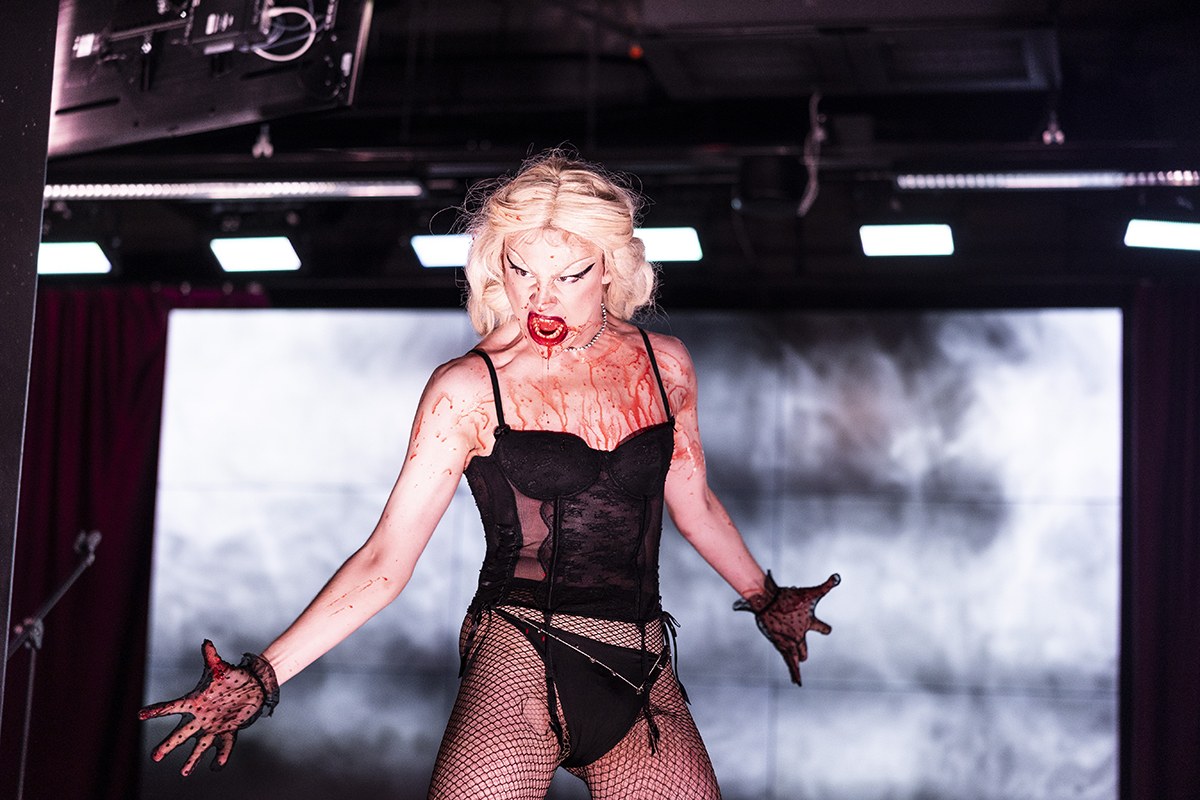
The public performance was hosted by the researcher and stand-up comedian Jamie MacDonald. Between each number he presented the following solo performance or commented on the one who just performed. Even if Jamie has a long carrier in hosting and organizing drag shows, he was surprised by the fierce, impertinence and majestic solo performances. As Jamie pointed out at the end of the show, these twelve solo performances displayed an impressive potential of transformation. It showed to the audience the power of daring to express yourself. Or better to say: yourselves. This transformative power is a power that we all have. If the students showed that it is possible to do it, then maybe we all might have this power in us. And that was probably the strength of the presentation: this sense of freedom, this feeling of empowerment, this beautiful irreverence towards the so-called norms.
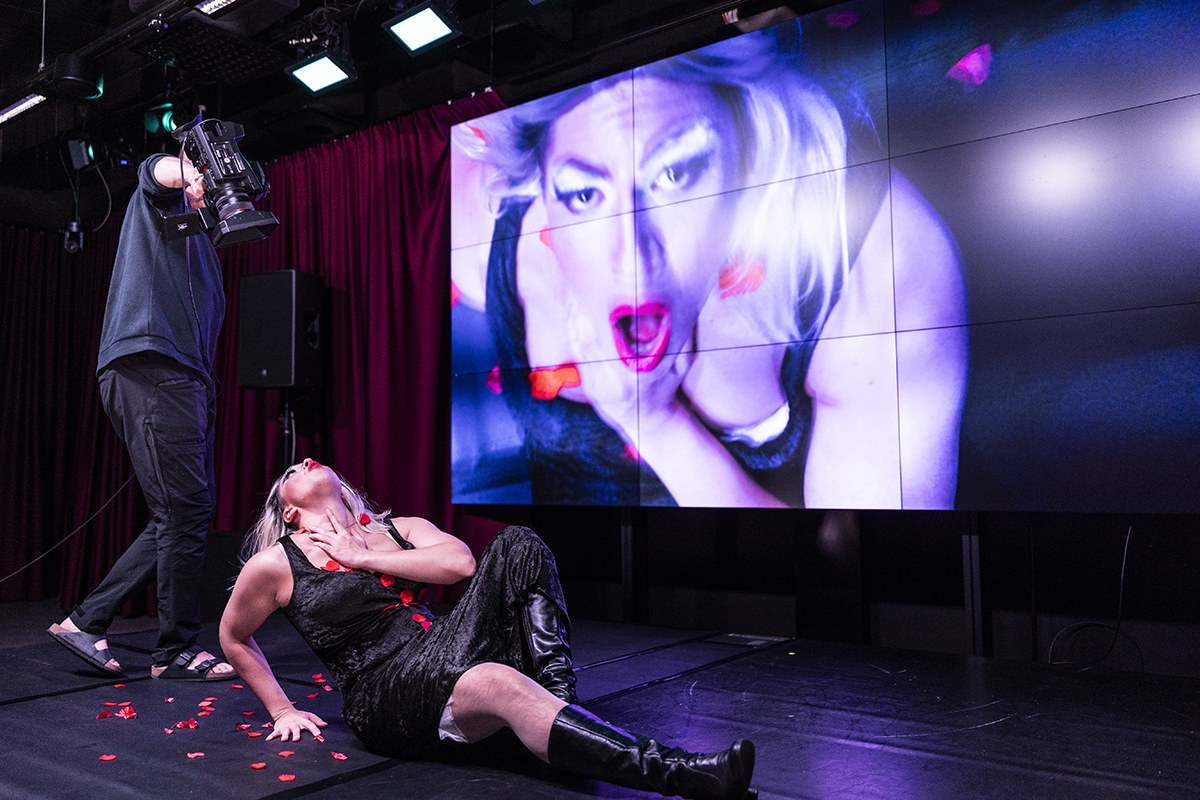
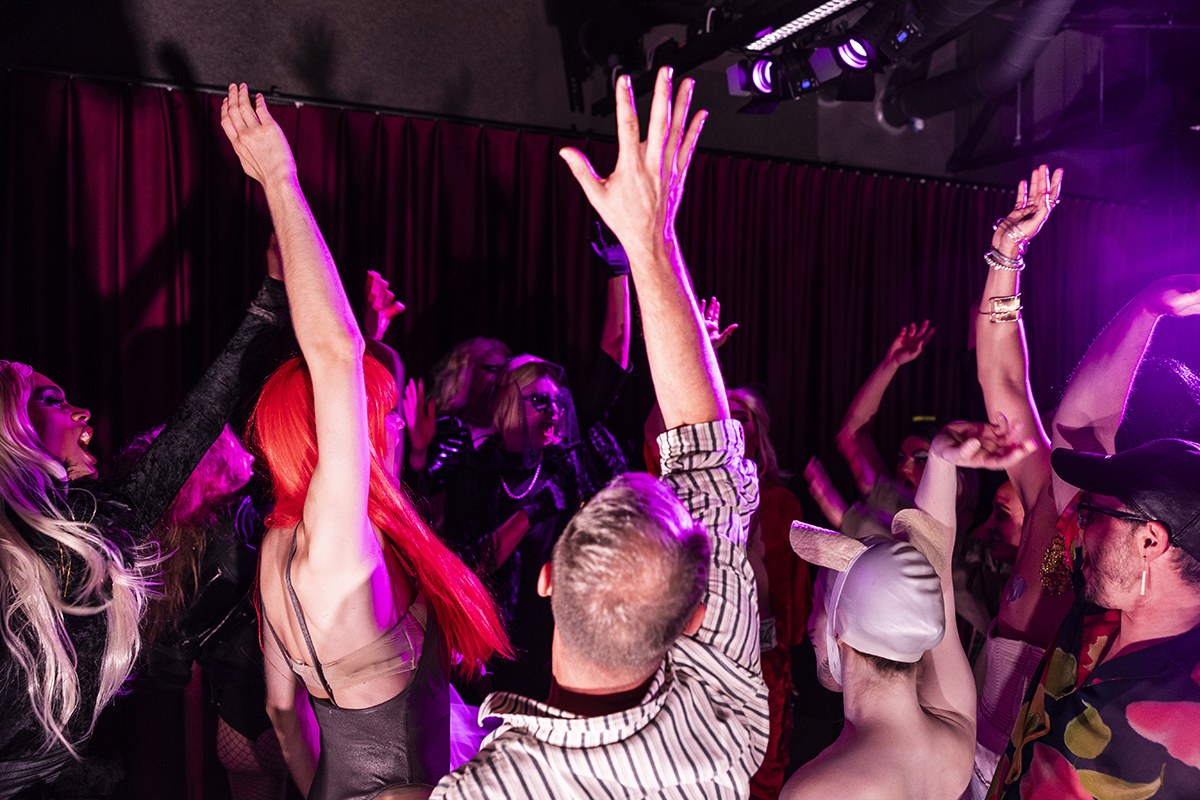
Photos: Jonne Renvall






